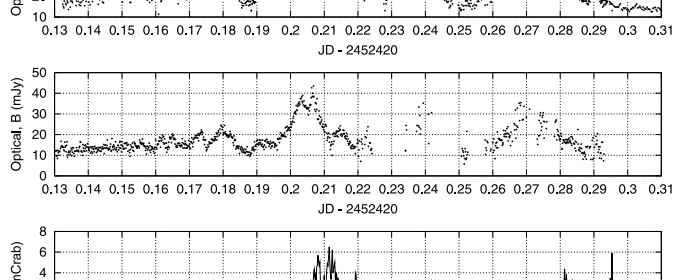Outburst and Post-Outburst Active Phase of the Black Hole X-Ray Binary V4641 Sagittarii in 2002

M. Uemura, T. Kato, R. Ishioka, K. Tanabe, K. Torii, et al., “Outburst and Post-Outburst Active Phase of the Black Hole X-Ray Binary V4641 Sagittarii in 2002,” PASJ, vol. 56, p. 61, 2004.
The black hole X-ray binary V4641 Sgr experienced an outburst in 2002 May, which was detected at X-ray, optical, and radio wavelengths. The outburst lasted for only 6 days, but the object remained active for the next several months. Here, we report on the detailed properties of light curves during the outburst and the post-outburst active phase. We reveal that rapid optical variations of ˜ 100 s became more prominent when a thermal flare weakened and the optical spectrum flattened in the Ic, Rc, and V-band regions. In conjunction with the flat spectrum in the radio range, this strongly indicates that the origin of rapid variations is not thermal emission, but synchrotron emission. Just after the outburst, we detected repeated flares at optical and X-ray wavelengths. The optical and X-ray light curves exhibited a strong correlation with the X-rays lagging by about 7min. The X-ray lag can be understood in terms of a hot region propagating into the inner region of the accretion flow. The short X-ray lag, however, requires modifications of this simple scenario to account for the short propagation time. We also detected high-amplitude rapid variations 50 days after the outburst, which we call optical flashes. During the most prominent optical flash, the object brightened by 1.2mag only within 30s. The released energy indicates that the emission source should be at the innermost region of the accretion flow.
